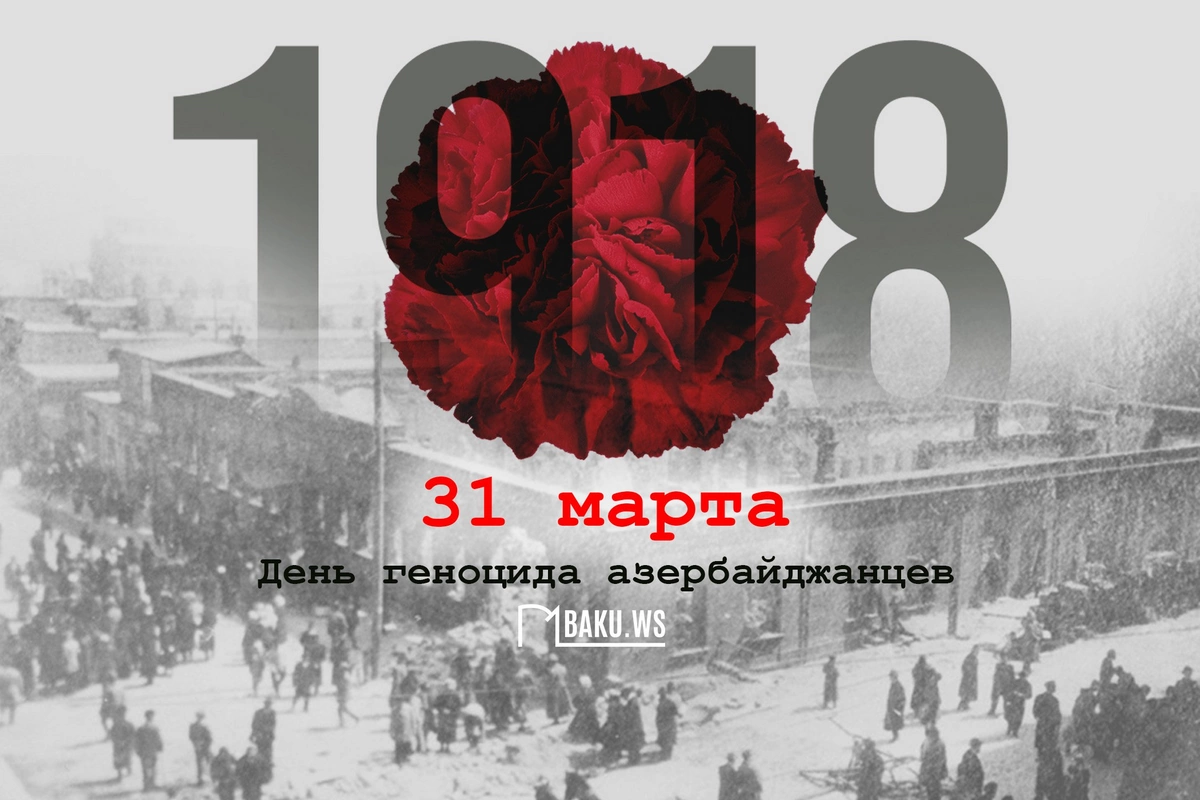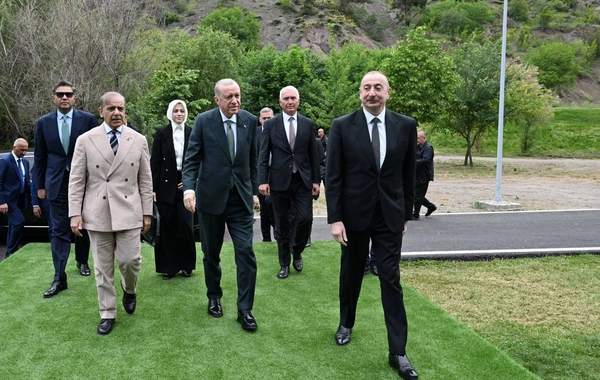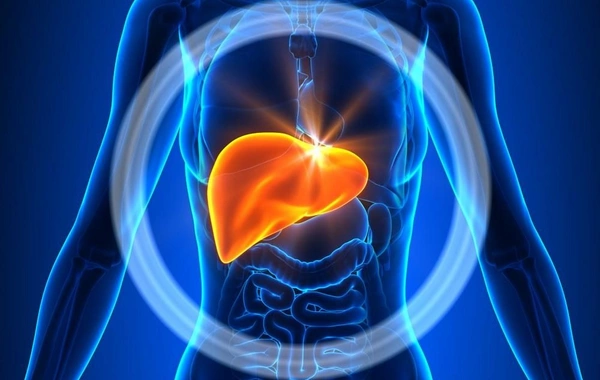107 years have passed since the genocide committed by Armenians against the Azerbaijani people

March 31 marks 107 years since the genocide - the first large-scale ethnic cleansing committed by Armenians against the Azerbaijani people.
During the terror, carried out with the blessing and support of the Bolsheviks, tens of thousands of our peaceful compatriots were killed.
On March 31, 1918, a mass massacre of Azerbaijanis began in Baku. According to official sources, as a result of the genocide, which continued until April 3, tens of thousands of Azerbaijanis were killed on ethnic and religious grounds in the city of Baku and various settlements of the same-named province, as well as in the territories of Karabakh, Nakhchivan, Shamakhi, Guba, Khachmaz, Lankaran, Salyan, Zangezur and other regions with the participation of the Baku Soviet troops and armed detachments of Armenian Dashnaks.
Settlements, historical monuments, mosques, and cemeteries were also destroyed. The massacre against peaceful Azerbaijanis involved 6,000 soldiers of the Baku Soviet, as well as a 4,000-strong armed detachment of the "Dashnaktsutyun" party.
A German named Kulner, who witnessed these horrifying days, wrote in 1925 about the Baku events: "Armenians broke into Muslim (Azerbaijani) quarters and killed everyone, slashing with sabers, stabbing with bayonets. The corpses of 87 Azerbaijanis, which were retrieved from a ravine several days after the massacre, had their ears and noses cut off, stomachs ripped open, and genitals mutilated. Armenians spared neither children nor the elderly."
After the establishment of the Azerbaijan Democratic Republic (ADR), special attention was paid to investigating the March 1918 events. For this purpose, on July 15, the ADR government created an Extraordinary Investigation Commission.
According to its materials, Armenian bandits killed up to 8,000 civilians in Shamakhi, 28 villages in Javanshir district and 17 in Jabrayil district were completely destroyed, and the population was massacred. Near Gyumri, an Azerbaijani caravan of 3,000 people, consisting mainly of women, children, and the elderly, was ambushed - all were killed to the last person.
Armenian armed gangs burned several villages in Nakhchivan district, destroyed 115 Azerbaijani villages in Zangezur district, killing 3,257 men, 2,276 women, and 2,196 children. In total, 10,068 Azerbaijanis were killed or maimed, and 50,000 became refugees.
135,000 of our compatriots living in 199 villages of Irevan province were killed, and the villages themselves were wiped off the face of the earth. Following this, Armenian gangs headed to Karabakh, where in 1918-1920, they destroyed 150 villages in its mountainous part and completely annihilated their population.
In a report sent to London by British Brigadier General V.A. Gorton on December 8, 1918, it is indicated that 20,000 Muslims became victims of genocide; in the materials of the Extraordinary Investigation Commission of the ADR - 30,000; and in the book published by the Milli Mejlis - 50,000. It's possible that this is not even the complete count.
The head of the Azerbaijani delegation at the Paris Peace Conference, Alimardan Topchubashev, in his address to US President Woodrow Wilson on May 28, 1919, presented him, along with other documents, materials from the Extraordinary Investigation Commission. After this, it was deemed appropriate to send a US delegation to the South Caucasus to collect objective information. General J. Harbord, who arrived in Baku for this purpose in the summer of that year, met with various individuals.
Russian and Armenian organizations operating in Baku at that time hindered the normal work of the Extraordinary Investigation Commission and organized pressure campaigns. But despite all the difficulties, it managed to accomplish a tremendous amount of work in a short time.
Stepan Shaumyan, who was directly involved in organizing these tragic events, tried in every way to justify his actions. In his letter to Moscow, to the Council of People's Commissars, he wrote that Armenians killed Azerbaijanis allegedly not on the grounds of national enmity, but out of devotion to Soviet power.
In 1919 and 1920, March 31 was observed in the ADR as a day of national mourning.
Similar News
Footage from Lachin has been published on Ilham Aliyev's official social media pages
Footage from the trip to Lachin has been published on the official social media accounts of the President of Azerbaijan Ilham Aliyev. As BAKU.WS reports, the vi...




 Azərbaycanca
Azərbaycanca  По-русски
По-русски  English
English 





